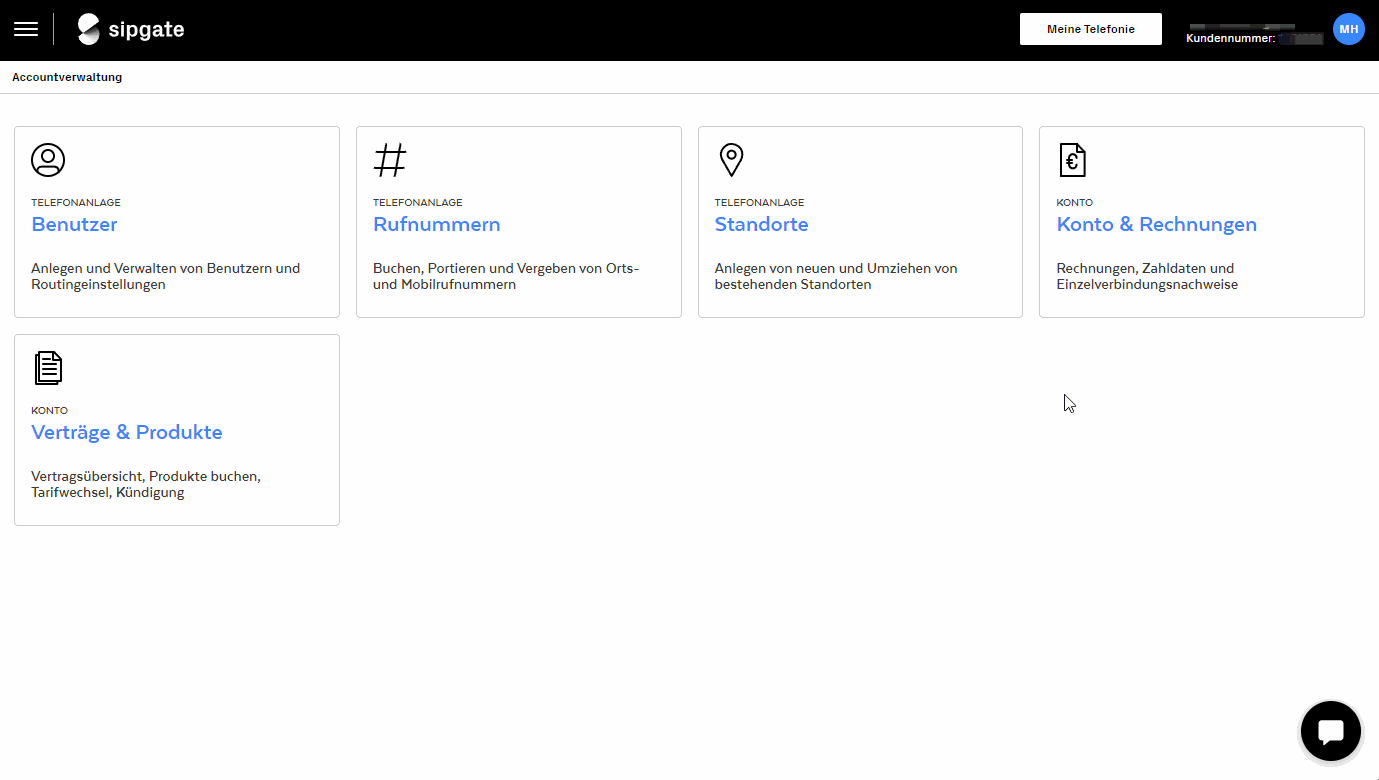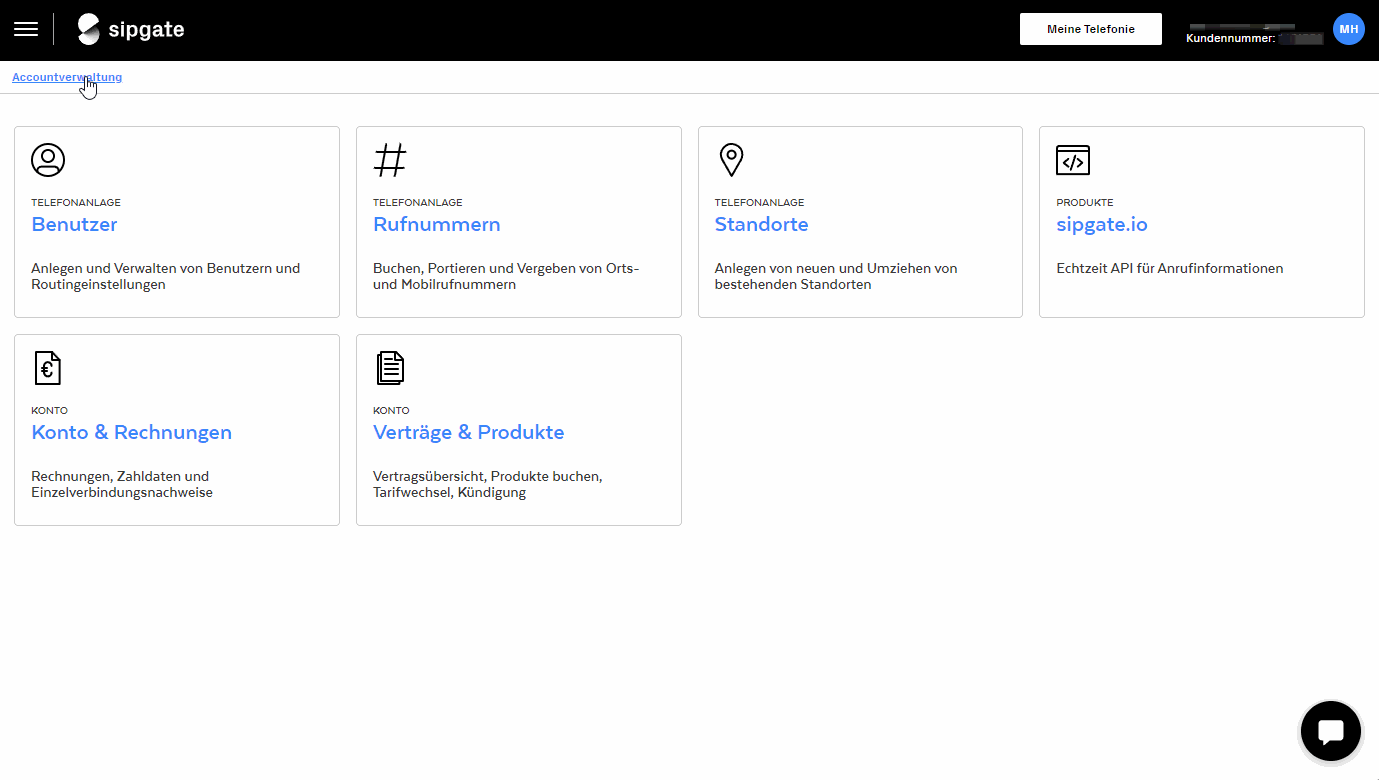Setup Sipgate connection for Zammad¶
Note
- Step 1: Book sipgate.io package
Hint
Skip to step 2 if you already have the package booked!
Login to an administrative Sipgate account and navigate to
Accountverwaltung. You’ll see several different options depending on your booked packages. SelectVerträge & Produkteto continue.Scroll down to the section
Zusätzliche Produkte buchenand look forsipgate.io- select this product by using theProdukte anzeigen-Button.On the next page select either one of the
sipgate.iopackages orPush-API Package Free. Follow the dialogue by booking the addon. You’ll be returned to your contract overview and now should see the selected addon in your list.Note
The availability for
sipgate.iopackages and their levels highly depends on the overall account type and product you’ve booked with Sipgate.
- Step 2: Configure webhook for Zammad
Within your
Accountverwaltungnavicate to your productsipgate.io. In the newly opened tab, switch from “Clients” to “Webhooks” and paste the endpoint URLs from your Zammad instance like so:Inbound endpoint to “Incoming”
Outbound endpoint to “Outgoing”
Note
Ensure to select at least one call group or phoneline within “Sources”. Other wise Sipgate will not indicate any incoming or outgoing calls to Zammad.

- Step 3: Restrict the numbers to notify on
Having a lot of numbers that shouldn’t be used for notifying Zammad? Within the Webhooks → URLs section of Sipgate you can select which sources Sipgate should notify Zammad about in- and outgoing calls.
Use either specific phone lines or use the option “Use for all phonelines and groups” to notify Zammad about all existing lines of your Sipgate account.

Hint
This section also allows you to enable a Debug log.

After enabling you can use the Debug log section to see all sent webhook calls to Zammad. You’ll also can see the response.

- Step 4 (optional): Further configurations for Sipgate
If needed, you can now configure Zammad’s Sipgate integration in more detail. You can learn more about your options here: Sipgate integration settings.